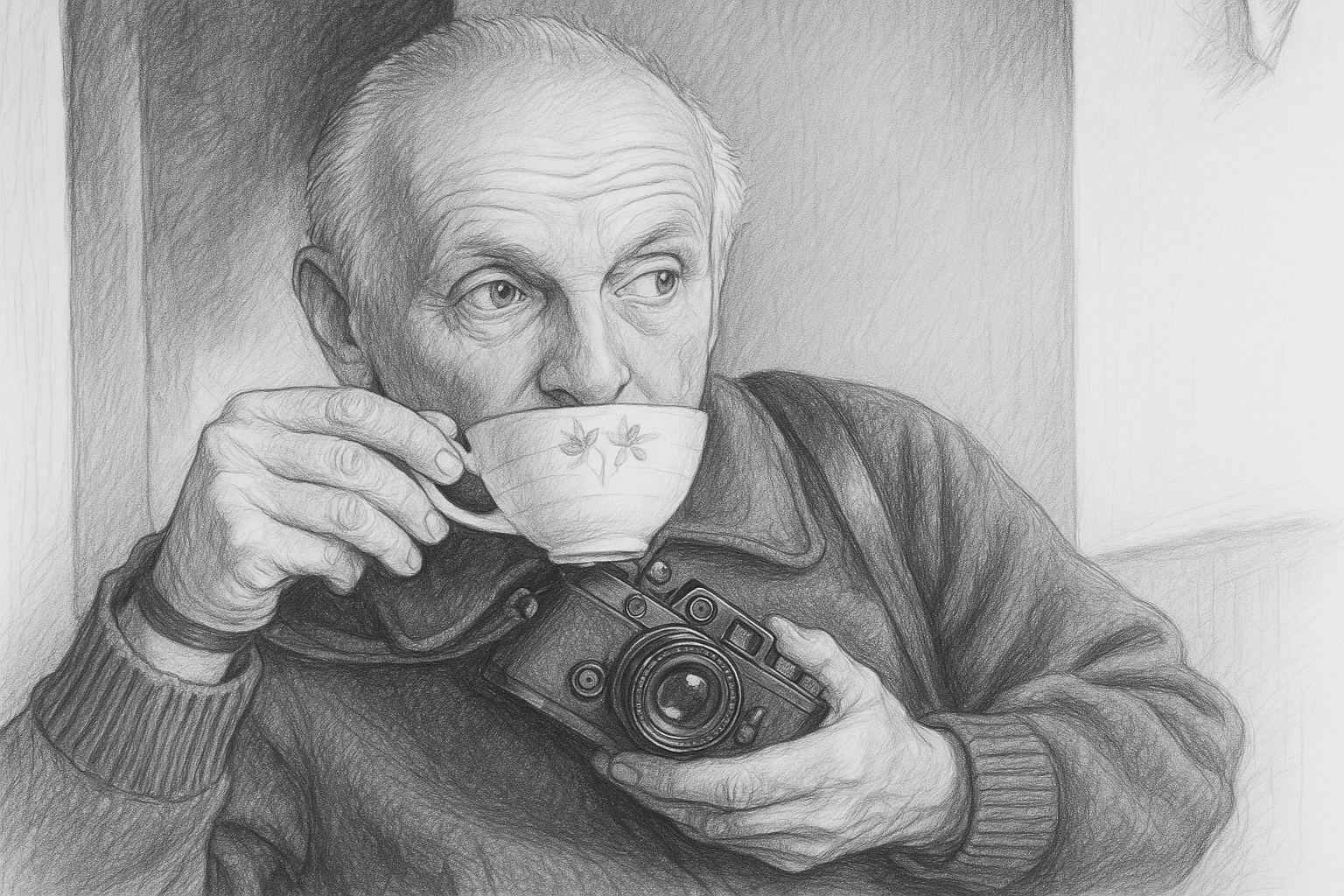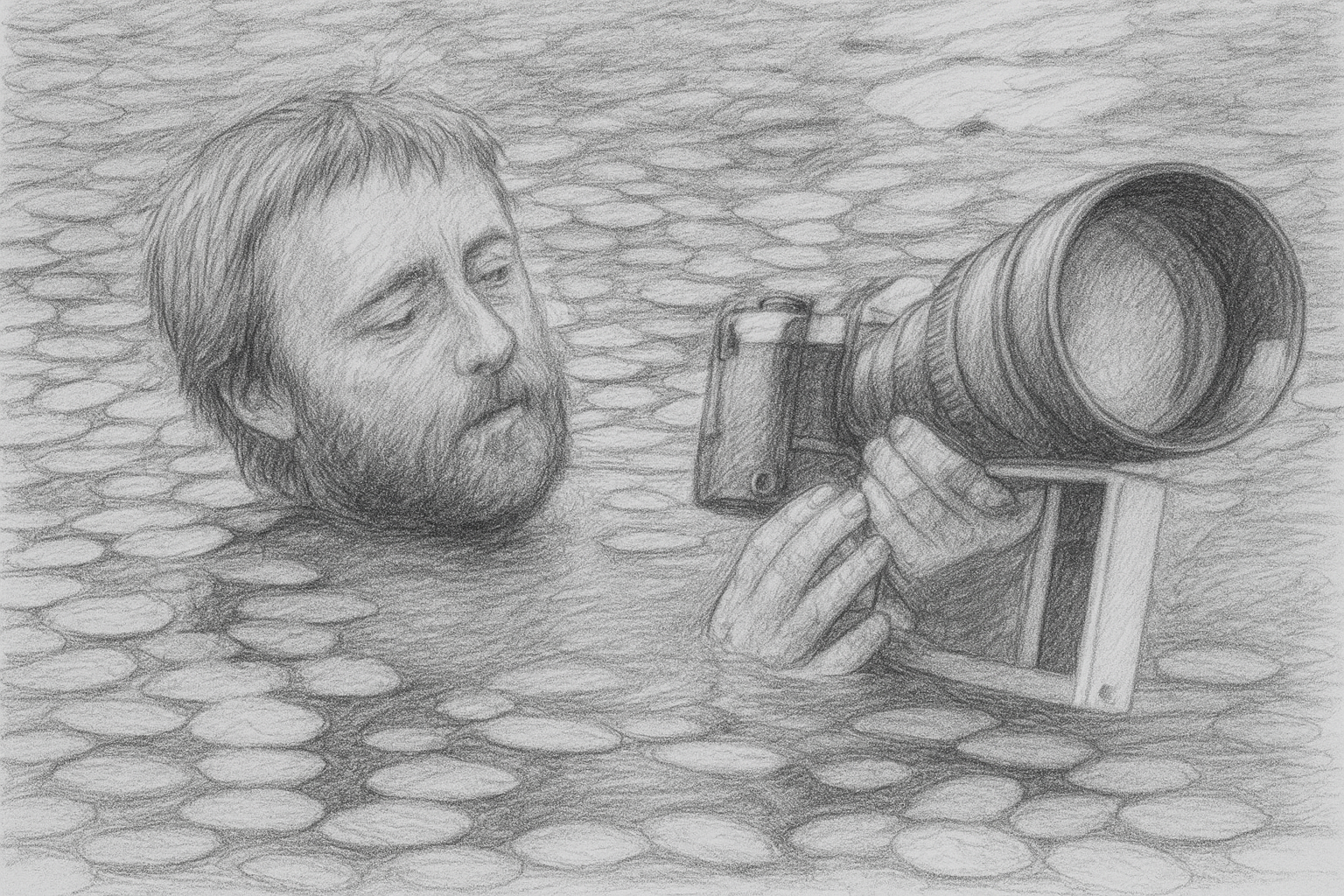
The secret street portraits of Vivian Maier
Today, Vivian Maier is a well-known figure in the genre of street photography and in the world of photography in general. However, this was not always the case, as the great photographer, who worked in seclusion and unnoticed during her lifetime, only achieved worldwide fame posthumously. Her existence as a talented street photographer remained largely unknown during her lifetime, a secret hidden in the countless negatives and prints that she hoarded for decades. It was only after her death in 2009 that the immense extent of her work was discovered, revealing an artist of exceptional talent and unique powers of observation whose street portraits offer a fascinating and intimate chronicle of urban life in the mid-20th century.
An incredible life story
Vivian Maier's story is almost as captivating as her photographs themselves. Born in New York City in 1926 to a family of French immigrants living in poverty in the Bronx, she spent much of her life working as a nanny and housekeeper. Throughout her life, her unremarkable existence stood in stark contrast to the exciting and diverse world she captured through her lens.
Vivian Maier took her first pictures when she lived in France for some time at a young age. Back in the USA, she mainly took her pictures during her numerous walks through the streets of New York and later Chicago. With her Rolleiflex camera, which she always carried with her, she navigated the urban landscapes as an inconspicuous passer-by, capturing fleeting moments of everyday life that went unnoticed by most. She was not only interested in classic street photography, but also talked to passers-by about mainly political topics in interviews that she filmed. She also took photos of political demonstrations and rallies.
Vivian Maier also created interesting images during a trip through North Africa lasting several months and on trips to the west coast of the USA. However, financial difficulties severely limited her photographic work.
Her camera was always with her - simple, functional, reliable. Anyone who, like Maier, moves through streets and cities with few resources needs a transport solution that is inconspicuous and yet protects. A compact bag, carried close to the body, helps to maintain freedom of movement and to be able to react at the right moment - quietly, discreetly and present.
Unique perspectives
Maier's street portraits are far more than mere snapshots, as they actually represent in-depth studies of human interactions and offer interesting perspectives on social contexts. The complexity and diversity of urban life become clear in the often intimate and highly personal portrayals of people on the streets of New York or Chicago. A characteristic feature of Maier's work is her ability to capture intimate moments in public space. Her street portraits often seem like glimpses into private worlds, moments of contemplation, joy or melancholy that unfold amidst the hustle and bustle of the city. She had an exceptional sense of composition, light and shadow, and her black and white photographs are characterized by a timeless aesthetic that captures the essence of the era without reducing it to mere nostalgia.
Her presence was barely noticeable, but her images remained. For today's street photographers with the same sensibility, a camera strap that is not only comfortable to wear but also protects with an invisible extra is worthwhile: an integrated cut protection, such as the Mosel camera strap, provides safety where attention is unwanted. Subtle, like a piece of clothing - barely visible, but crucial.
Vivian Maier never showed her impressive pictures to anyone throughout her life and always kept her private living space a closely guarded secret. She was a loner who had neither close friendships nor close family ties, let alone children of her own. She always hid her passion for photography and her inner life from the families she worked for, and in later years she lived alone and in the poorest of circumstances. After she even had to sleep on the street for a while in the 1990s and was homeless, three of the children she had accompanied as a nanny provided her with an apartment and paid her bills. In the years that followed, Maier suffered from poor health and stopped working as a photographer.
By pure chance, her work was discovered in 2007 during a forced sale of her property due to rent debts. At the time, this included not only countless shoeboxes full of pictures, but also thousands of undeveloped rolls of film. The purchase of a box of negatives by John Maloof at auction led to the gradual unveiling of Vivian Maier's immense and extraordinary oeuvre, and the subsequent publication of her work sparked a worldwide fascination.
The anonymity that surrounded Maier during her lifetime undoubtedly contributed to the authenticity and immediacy of her street portraits. Without the expectations of an audience or the constraints of commercial success, she was able to follow her artistic vision freely and unhindered. Her camera was her constant companion, a tool of self-discovery and a means of understanding the world around her.
Self-portraits of an unknown woman
Another fascinating aspect of Vivian Maier's work is her numerous self-portraits. These often enigmatic images, which show her in mirrors, shop windows or other reflective surfaces, shed a fascinating light on her own identity and her relationship to the world she viewed through her camera. These self-presentations are not narcissistic, but rather seem like quiet reflections on her own role as an observer and artist.
Vivian Maier's secret streets are thus not only the physical places she roamed, but also the hidden stories and emotions she captured in her street portraits. Her work is a window into a bygone era, an intimate encounter with the people and the spirit of the cities of New York and Chicago in the middle of the 20th century. It is not only her photographs themselves that are fascinating, but also the intimate understanding of her very personal views of the world, which she never shared with other people throughout her life.
Sometimes all it takes is a single moment - a reflection in a shop window, a shadow on the wall of a house. When everything you need is within easy reach, your gaze remains free for precisely these fleeting images. A bag with a timeless design supports this way of seeing: it is not distracting, it is simply there - ready when the moment is.
Conclusion
Vivian Maier remained an unknown during her lifetime, but her work has received immense recognition posthumously. Her street portraits are now exhibited in galleries around the world and celebrated by critics and audiences alike. While the stark contradiction between her own approach to her work and her difficult and poverty-stricken life and the enormous revenue people generate from her work today raises many questions, Vivian Maier's work and life can still inspire us today. Her story reminds us that creativity often blossoms in obscurity and that sometimes the most unassuming people have the deepest and most important stories to tell.
Maier's life was characterized by a desire for restraint, but also by the need to preserve her impressions. Today, small, well-thought-out details such as a robust case for films, memory cards or a pocket for batteries help us to do just that: to transport memories safely without giving them unnecessary attention. Reduction to the essentials - not as a stylistic device, but as an attitude.

